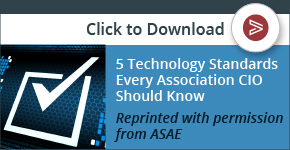 With its much-anticipated announcement this week, Apple became the latest and the last of the leading smartphone vendors to adopt Near Field Communication or NFC technology. The company announced NFC will be in its forthcoming iPhone 6 models and will become the enabling technology for a new mobile payment ecosystem called Apple Pay. Apple Pay will allow consumers with iPhones to pay for goods and services at some 220 thousand stores throughout the U.S.
With its much-anticipated announcement this week, Apple became the latest and the last of the leading smartphone vendors to adopt Near Field Communication or NFC technology. The company announced NFC will be in its forthcoming iPhone 6 models and will become the enabling technology for a new mobile payment ecosystem called Apple Pay. Apple Pay will allow consumers with iPhones to pay for goods and services at some 220 thousand stores throughout the U.S.
For those who are not as familiar with Near Field Communication technology as, say, Bluetooth, which has become pervasive over the past 16 years, NFC is a short-range wireless connectivity technology that enables some pretty cool and useful applications. Mobile payment is most frequently cited. NFC-enabled phones can emulate credit cards at point of sale via contactless terminals. They can also connect NFC devices (e.g., a phone and laptop) easily for fast and intuitive information exchange. And NFC devices can access digital content from so-called tags, inexpensive integrated circuits that can even be printed on posters with conductive ink.
Though late to the NFC party, Apple is also including NFC in its newly announced Apple Watch smartwatch, which is expected to ship early next year.
For many consumers, Apple’s NFC product announcements are a lightning bolt, the first they’ve heard of the technology. A study last year of 9,000 European consumers in six countries revealed that just eight percent were aware of this emerging technology. This is despite the fact that NFC is already in hundreds of millions of mobile phones worldwide and first appeared in a Nokia “feature phone” in 2006. There are dozens of NFC-enabled phones already on the market, along with numerous NFC tablets, computers and game controllers, and Sony introduced its Android-powered NFC smartwatch last year.
All of which is indicative of how long it really takes to develop a new technology standard, get key global technology vendors to build upon those baseline standards, invest in product development and bring their standardized products and services to consumers on a global scale. And, of course, for consumers to become aware of and embrace new technologies as part of their daily lives.
NFC was jointly adopted as a new technology standard by the International Organization for Standardization and the International Electrotechnical Commission in December 2003. Virtual’s long-time client, the NFC Forum, the international standard-setting organization that has been spearheading the evolution of NFC technology by developing technical specifications and an international testing and certification program, turns 10 years old next month. The NFC Forum has advanced NFC technology and adoption steadily over the past decade even as its member organizations, including such players as Google (its software runs 85 percent of smart phones), NXP Semiconductors, Samsung (the smartphone market leader) and Sony have introduced NFC products in markets around the world.
Those companies and some 200 others buckled down for the hard work of building up NFC standards and promoting adoption. Apple, which generally eschews involvement in standard-setting organizations, preferring to let its solutions become de facto standards, remained on the sidelines and never became active in the NFC Forum or any of the organization’s activities.
So what’s next for NFC? First, it appears that mobile payment is emerging as the key “killer application.” While there are many uses for Bluetooth technology, hands-free calling became its killer app, driven by legislation in the U.S. and many other countries that mandated hands-free calling while driving. The proliferation of Bluetooth headsets spiked consumer awareness and adoption of the technology.
NFC technology may have several killer applications. Besides mobile payment, device-to-device connectivity is another broad application area with limitless possibility. Consider the advantages of instantly connecting wearable devices like smartwatches with smartphones and NFC-enabled computers to share such information as health and fitness data.
Regardless of which killer apps emerge for Near Field Communication, you can bet that with the final big and influential technology player embracing NFC, it is poised to become another 10-year overnight success.
History shows that new technology markets aren’t built in a day. The road to standards adoption is usually a long and arduous one.
![]()
